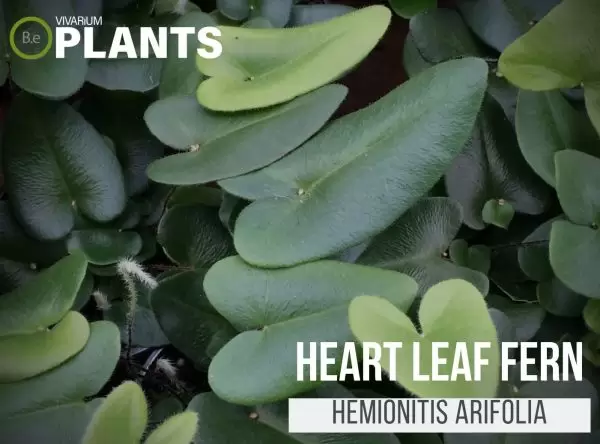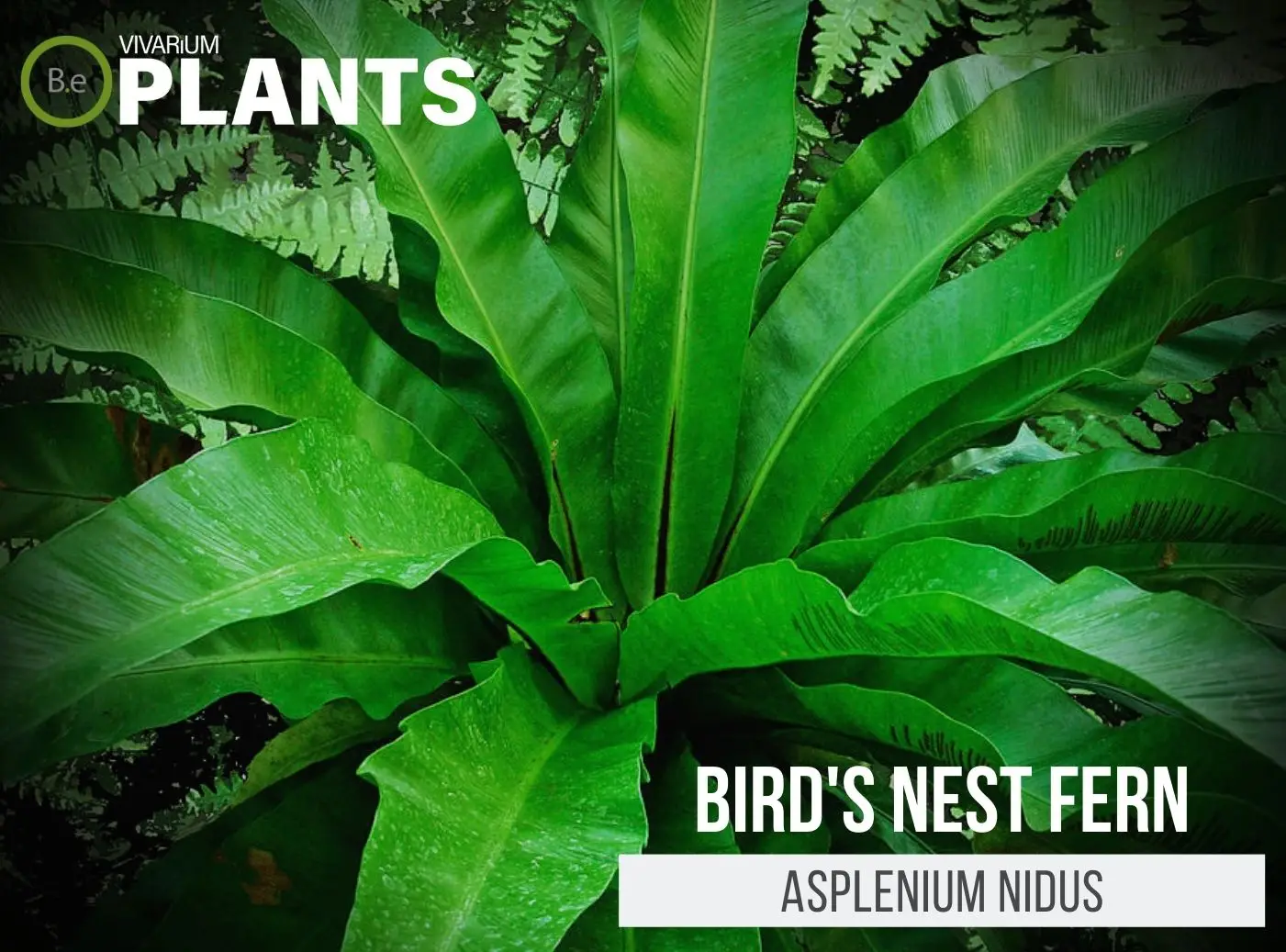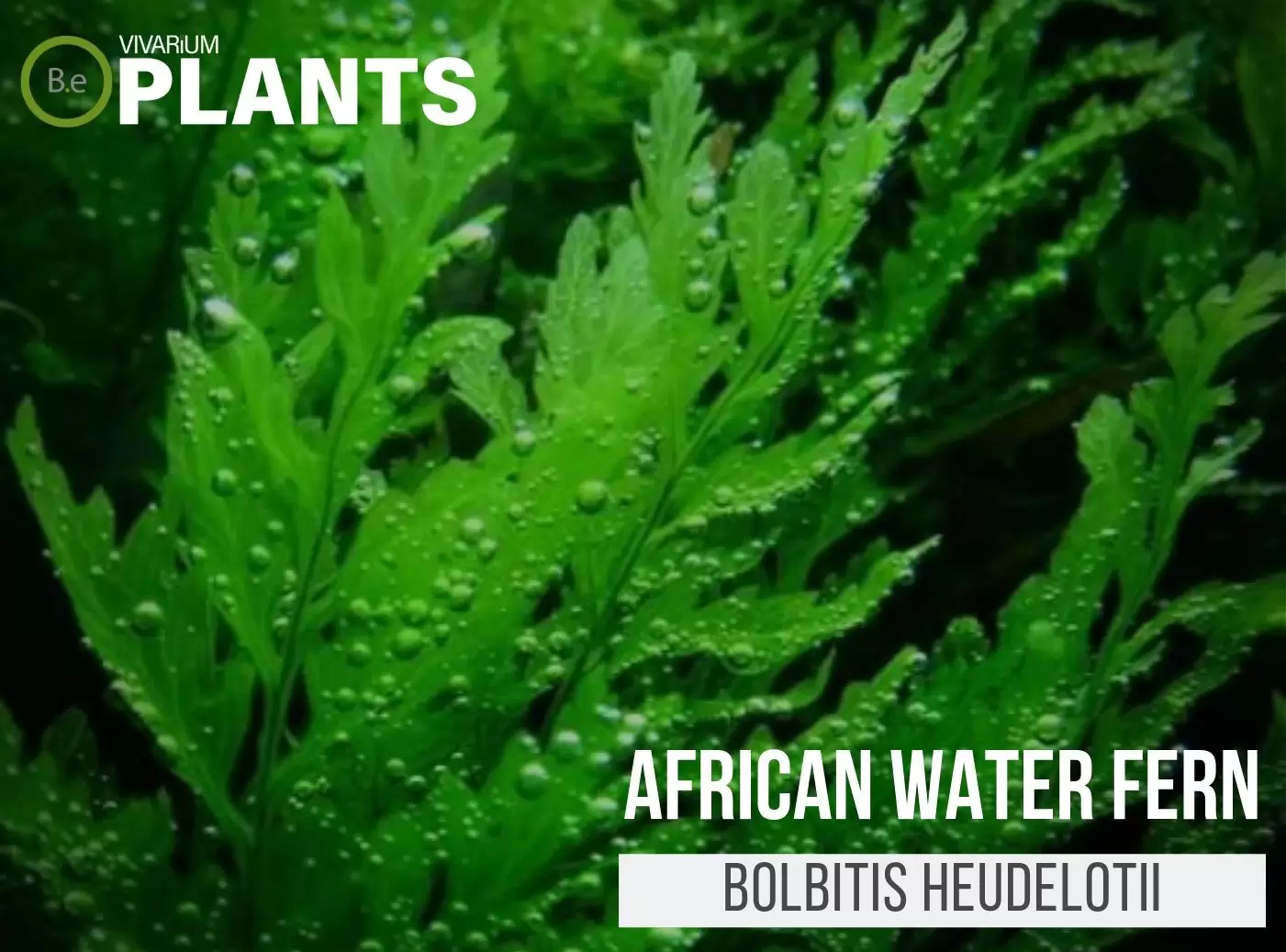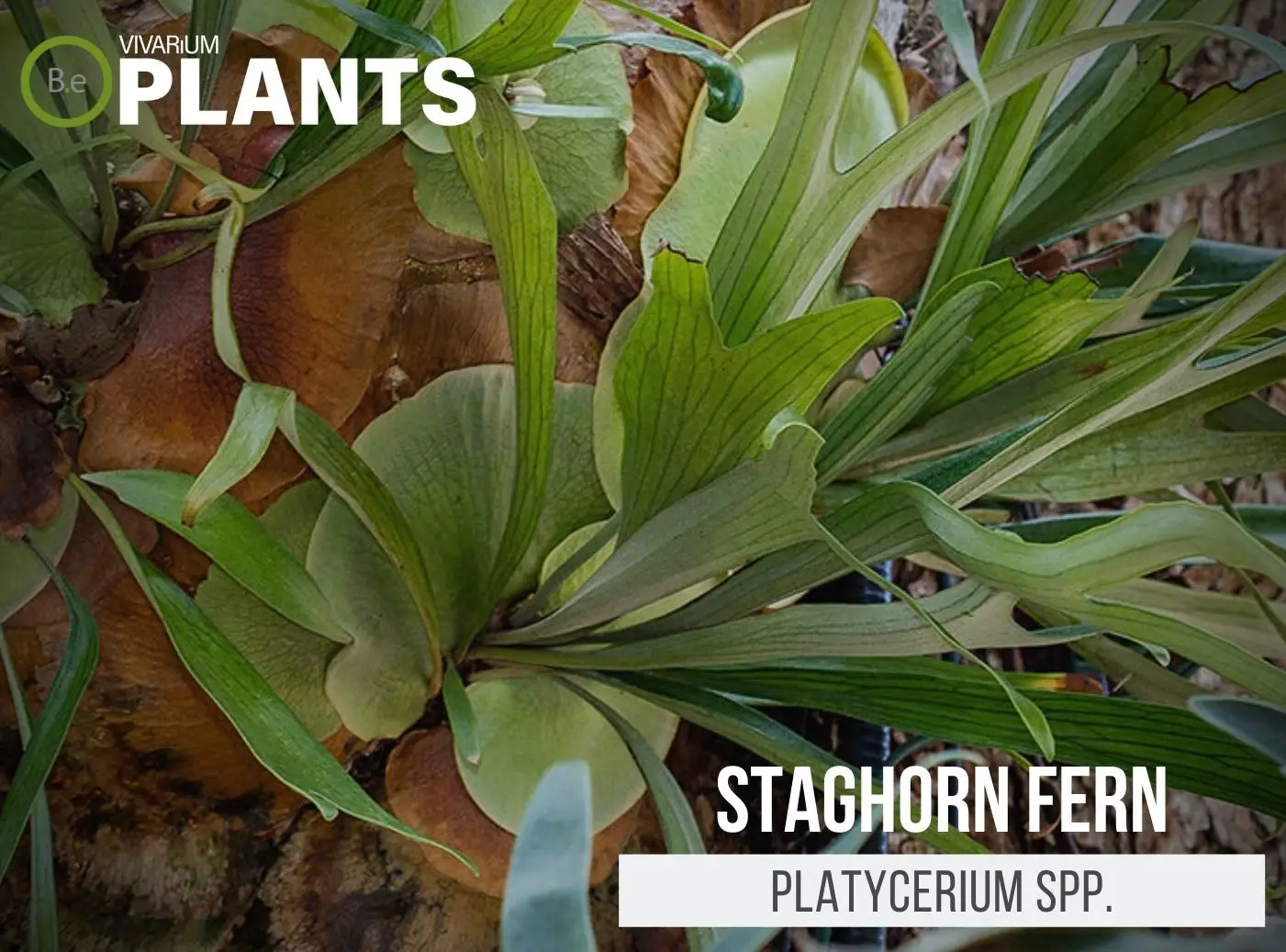When it comes to terrarium ferns, there aren’t many as suitable for life in an enclosure like the heart fern (Hemionitis arifolia).
The shade-dwelling, high humidity-dependent plant is more commonly used as a houseplant.
As time is proving to many hobbyists, this fern is turning out to reveal its full potential when placed in terrariums and fairy gardens.
This article will exhibit ways to properly care for this plant as well as facts about its origin.
The heart leaf fern can be a bit more challenging to work with compared to other similar ferns.
Hopefully, this guide will provide insight into the successful upkeep and propagation of this unique flora.
Table Of Contents:
ToggleWhat Is Heart Fern?
Hemionitis arifolia is a species of fern within the Pteridaceae family.
Typically used as a houseplant for decoration, this fern is also used for medicinal purposes to treat cancer in parts of Asia.
Hemionitis is commonly referred to as heart fern due to its uniquely shaped leaves resembling a heart.
This plant is typically found to be an epiphyte meaning it grows on top of other plants or trees but not as a parasite.


Heart Fern Facts
Besides the Heart fern, Hemionitis arifolia is also commonly referred to as Heart Leaf Fern, at times even, Tongue Fern due to the distinctive appearance of its fronds.
Like most ferns, this type of plant thrives in tropical type environments where humidity is moderately high and shade is abundant.
Though, it does go without stating, heart leaf fern can be a bit more delicate and require a bit more attention.
Description
Heart fern is a very distinguishable plant when compared to other ferns.
In fact, it really doesn’t resemble a typical fern at all.
Every aspect of it from the sprouting stem base to the formation of the fronds is very unusual and could often lead to mismanagement of the plant due to false recognition of its species.
For starts, the leaves are a dark green colored frond taking on the shape of a heart or a tongue… Hints the common names.
They regularly reach a full-grown size of 2 to 3 inches in length.
If you were to rub your fingers across the surface of the leaves, the texture would resemble a leather-like feel to them.
The stems that the leaves branch out from are dark brown, appearing almost black in color, and have a very narrow, stringy look to them.
Small white hairs growing off this part of the plant give the firm, wire-like stems a velvety feel to the texture.
The stems will reach a maximum length of 3 to 5 inches pushing this dwarf fern vertically 6 to 10 inches in total height.
Habitat
The origin of the heart fern is in southeast Asia.
The habitat is a moist, humid environment consisting of dense tree foliage.
The tropical type of setting this fern is used to is bright from indirect sunlight and has plenty of shade.
Hemionitis arifolia can often be found growing on the forest floor where the soil is damp or along the trunk of moss-covered trees.
Temperatures here will range from the low 60s to the mid-80s depending on the time of year.
pH Preference
Heart fern tends to prefer to be on the more acidic side of potential hydrogen.
In the wild, this plant is often found on very acidic soil or tree trunks with highly acidic bark.
Ideal pH levels will be in a range of 5.0 to 6.5 but this heart leaf plant can tolerate levels closer to 7.0 for a period of time.
Vivarium Type
This type of fern is perfect for a variety of vivariums.
When deciding if rather or not to use Hemionitis arifolia in a particular type of enclosure, be sure to go with setups that feature full land areas.
This plant won’t tolerate saturated soils or dominantly aquatic enclosures.
Here are recommended vivariums heart leaf fern will do well in:
- Paludariums – Half aquatic/ half terrain-based enclosure.
- Terrariums – Fully terrain-based enclosures with little to no aquatic features.
Vivarium Placement
As I mentioned earlier, this fern needs to be in an enclosure that has adequate amounts of land space.
When deciding on an ideal location in a terrarium to place this plant, aim for areas that are brightly lit and have well-drained soil.
Being centerpiece foliage, this fern looks great in the foreground area of an enclosure.
If the background wall is covered in organic matter like bark or moss, try pinning the plant directly to the wall for an added visual.
It will do well on walls if the surface is well-hydrated.
Substrate
Heart fern is a pretty versatile plant when it comes to growing locations.
It is an epiphyte so not only will it do well in proper soil, but it can also grow on surfaces without substrate.
Hemionitis arifolia absorbs its nutrients from a combination of the air, falling water, and debris the plant comes in contact with.
Understanding the way the rooting system works on this plant is key to successfully managing this plant properly.
If planting this fern directly in the soil, aim for a loose mixture of terrarium substrate low in pH.
A combination of sand and coco fiber will be light enough for roots to easily stretch through.
Adding peat moss to the top layers or mixing will aid in moisture as well.
The substrate should always be well-drained and never completely saturated in water.
Another common placement for this fern is above ground, tied to wood or stone.
This is an ideal location in the wild for the heart leaf fern.
A layer of moss between the plant and the surface is recommended for moisture but not mandatory.
A hefty way to retain moisture in these higher areas is to add a fogger or misting system to the enclosure.
This will make it easier for the epiphyte to hydrate and receive constant nutrients.
Lighting
The tropical environment Hemionitis arifolia is native to provide a realm of shade and indirect sunlight.
Exposing this plant to direct sun will cause immediate dryness and death.
When setting up lighting within the vivarium for this fern, a high level of brightness would be ideal since the plant is indoors.
The tank should be away from windows and avoid any type of artificial light that produces UV.
Aim for cooler colored lights that mimic a cloudy day or shaded forest, Like LEDs!
Buy Heart Fern
When shopping for heart leaf fern, expect a few key indicators you are buying the best quality plant.
The fern is susceptible to bugs and various root diseases.
If the plant is received with any type of terrain pest, immediate removal of bugs should be enough to keep the plant in good health.
Leaves should arrive in good shape and rich in color but some browning should be treatable with pruning.
Checking roots for rotting or decaying will be the priority here.
Click the image below to find out more about the current price and other relative info:


Heart Fern Care and Propagation
The needs required for a healthy heart fern come down to two things… Moisture and lighting.
This plant is used in an environment that is consistently damp and well-lit.
If the water received is not overwhelming and the luminosity provided is bright but not directly consisting of sunlight…
This fern should do well and grow large enough to propagate.
How to grow
The easiest way to propagate Hemionitis arifolia will be to divide an existing mass of the root ball into individual parts.
The roots need to consist of at least one healthy stem bearing a frond.
This will allow the new portion of the plant to continue progressing.
Plant the mass in wet, but not saturated, soil, or tie the base of the plant to the background.
If the fern appears to be dying back, adjust the watering routines.
Use low ph water and moderate lighting to encourage growth.
Once acclimated, cut back on the amount of water given.
Watering
The best watering practice for heart fern will be to add water as the top layer of the soil appears dry.
In the beginning stages of transplanting, it is vital to give quality water when necessary.
It is completely normal for leaves to brown and dies off a little at first.
The fern will need time to readjust to the new environment and establish its roots.
A neat trick for those using pots is to place the pot over a dish of water.
This will help the soil maintain moisture.
Covering the top layer of the soil with gravel or moss will aid in retaining moisture as well.
Plants Similar To Heart Fern
Adding diversity to an enclosure is key to an aesthetically pleasing enclosure.
Try mixing up the look of your vivarium with different flora that can easily co-exist in the same types of environment.
Furthermore, if for some reason you find heart fern hard to acquire or would like to consider something similar to this plant…
Here are some other plants you might find may do well with or in the place of Hemionitis arifolia:
DIY Projects With Heart Fern
If you are interested in seeing cool projects I’ve built with this plant or a number of others.
Make sure to check out the DIY section of the site.
I have a ton of new stuff coming to the site soon and one of my latest projects was a Mini Planter Box made specifically for my Heart Fern Plant.
Click on the image down below to see how that came out or if you are just curious to see how my Heart Ferns have been doing… (Spoiler, she got huge!)


Conclusion
Heart fern is a very unusually attractive terrarium plant to have in a vivarium.
Besides having the plant for common practice, this would be a very fitting fern to use in a valentine day themed enclosure.
Even though many would consider this plant difficult to care for, the right amount of understanding would make this fern fairly easy to grow.
The dwarfing nature of this plant paired with the tropical requirements makes Hemionitis arifolia a very fitting plant for terrariums… which we love here!
What are your thoughts on this rare epiphyte?
Frequently Asked Questions
Heart Ferns require bright indirect light and consistent moisture. Water your Heart fern regularly, making sure the soil stays moist but not soggy. You may also mist it occasionally. Feed your Heart fern with a liquid or slow–release fertilizer every two to four weeks during the growing season for an added boost. Keep its soil acidic with the addition of organic material, such as pine nuggets or shredded leaves. Inspect your Heart fern several times a month to inspect for pests such as mealybugs, scale, aphids, and spider mites.
Generally you should water a heart fern once per week. Make sure to check the soil before watering—if it feels moist, wait until it feels dry before watering. During the warmer summer months, you may need to water more frequently.
Heart Leaf Ferns typically reach a maximum height of 6 to 10 inches.
No, heart ferns are not toxic. They are a type of wildflower native to North America, and are safe for gardens, ponds, terrariums, and pets.
Yes, heart ferns actually prefer to be root bound. The best way to keep your fern happy is to keep it in the same pot for two to three years, and then re–pot in fresh soil. Make sure that the pot has plenty of drainage and water regularly.





